
A Comprehensive Crypto App Marketing Guide: All You Need to Know
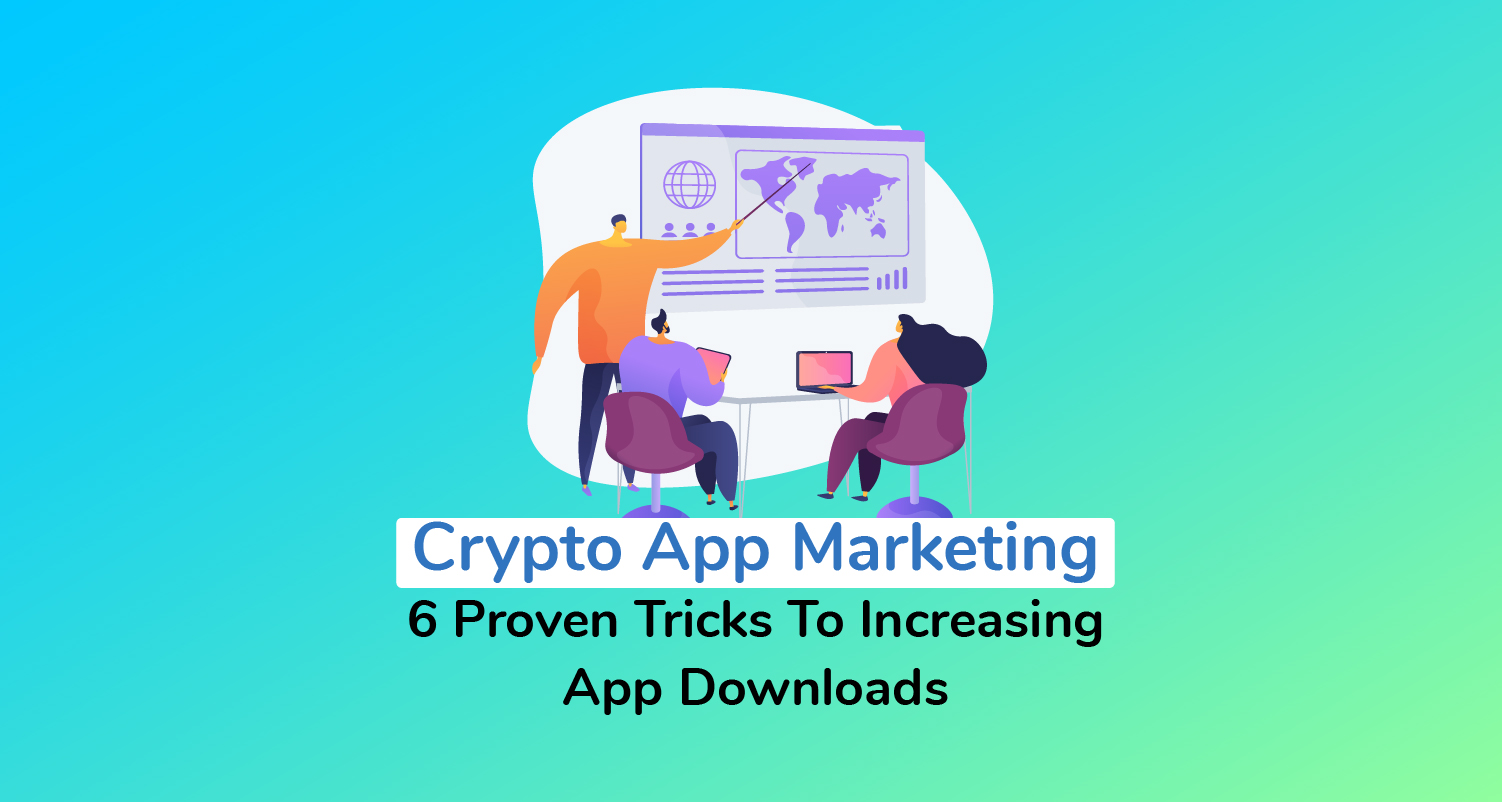
Looking for effective crypto app marketing tactics to promote your upcoming cryptocurrency app? Or maybe you’ve already launched your crypto app, and are curious how you can progressively increase the app downloads.
Table of Contents
- What Is a Cryptocurrency App?
- The Curious Case Of The Crypto App Market
- The Good
- The Bad
- 6 Top Crypto App Marketing Tactics That’ll Boost Your App Installs
- #1. Know Your Target Audience
- #2. Get Published On Cryptocurrency Calendars
- #3. Warm Up The Market With Pre-Launch Mobile App Reviews
- #4. Leverage The Media Through Mobile App Press Releases
- #5. Build Trust With Website Content
- #6. Dominate Organic Rankings With App Store Optimization
- Key Takeaways
Whichever the case, this is the guide that will get you in the groove.
And no, I’m not just saying that for the sake of it. You see, by the time mobile app developers began rolling out blockchain and crypto apps, I had already accumulated years of experience in mobile app marketing. In fact, I’d say my portfolio then had hundreds of successful app promotion projects.
Now, guess what? I’m now at over 3,300 and counting – with crypto apps accounting for a decent chunk of the half a billion plus app downloads I’ve racked up so far.
Here’s the thing, though – while I was working with the cryptocurrency applications, I couldn’t help but notice that the blockchain app market is quite different from the rest of the categories.
Take it from me – although our general app promotion guides might give you the much-needed headstart, the standard crypto mobile app marketing methods are not guaranteed to work as effectively here. Instead, your crypto app marketing plan will ultimately need specialized tweaks to cope with the rather unique market environment.
These are the approaches I’ll be revealing in this comprehensive crypto app marketing guide. And while you follow along, it’s worth noting that I’ve tested out and compared quite a number of traditionally high-performing mobile app marketing strategies to arrive at these 6 proven tactics. This is all based on years’ worth of research.
However, before we dive deep into the nitty-gritty, it’s only right to set the record straight on the blockchain app scene.
In other words, what are crypto apps in the first place? How do you establish that yours is one? And what is so unique about this particular market environment?
What Is A Crypto App?
To understand what a cryptocurrency app is, let’s first define the term “cryptocurrency.”
Well, according to Forbes, cryptocurrency is a decentralized form of digital money, which runs on blockchain technology. That means it’s not regulated by a central authority like standard currency.
Instead, the transactions are entirely peer-to-peer, with binary data being exchanged from one party to another. Once you receive the funds, ownership and transaction records are securely held in an encrypted computerized ledger, which uses strong cryptography to protect the data.

Satoshi Nakamoto, one of the first people to document this phenomenon, described cryptocurrency as “a digital payment system that relies on cryptographic proof instead of trust.” It’s on this same 2008 paper that he even identified Bitcoin as the first cryptocurrency.
And when Bitcoin laid the foundation, other forms of cryptocurrency soon followed suit. So much so, in fact, that there were 66 of them by 2013, 506 in 2014, and then 644 by 2016 – after which the blockchain concept proceeded to spread exponentially, to the point of hitting 6,000 plus cryptocurrencies by 2021.
Bitcoin now shares the league of fame with the likes of Ethereum, Litecoin, Dogecoin, Cardano, and XRP – but the ranks keep changing as new cryptocurrencies come into the scene to challenge the established ones.

When mobile app developers finally got in on the action, they gave rise to cryptocurrency apps – which, in other words, are known as crypto apps or blockchain apps.
It’s worth noting, however, that crypto apps are restricted to one specific use case. Rather, when you dig deeper, you’ll notice that “crypto apps” is more of a general term that describes all types of app builds in the blockchain and cryptocurrency space.
Popular subcategories here include:
- Crypto mining apps
- Crypto trading apps
- Crypto exchange apps.
- Crypto wallet apps.
- Crypto investing app.
- Crypto tracking apps.
And so on and so forth. So versatile is this blockchain space that you could even create your own cryptocurrency, and then build a mobile app around it.
The Curious Case of The Crypto App Market
The crypto app market itself comes with a rather interesting mix of opportunities and challenges.
I’ll give you the good side first. And it has a lot to do with the market’s increasingly positive growth trend.
The Good
You see, back in 2013, cryptocurrency and blockchain were barely new and struggling to gain prominence. The crypto app market, at that time, was completely dead and showing no prospects of future growth.
Contrastingly, however, that was soon to change in quite a dramatic manner.
It all began when people started warming up to blockchain technology in 2014, with many appreciating the anonymity that Bitcoin transactions offered. Then as the volume of users expanded and demand increased, the value of Bitcoin started appreciating pretty sharply – which eventually sparked a crypto gold rush that completely changed the dynamics of the market.
So intense was the world’s obsession with cryptocurrencies that over 100 million more users had joined the bandwagon by 2020. Estimates published by Crypto.com suggest that there are now more than 220 million crypto users across the globe – up from 106 million in 2019.
Enjoying the limelight alongside cryptocurrencies were crypto mobile apps, whose usage grew precipitously as smartphone users adopted blockchain. Crypto wallet apps and platforms, for instance, now boast a user base of close to 80 million and still climbing – courtesy of the blockchain gold rush.
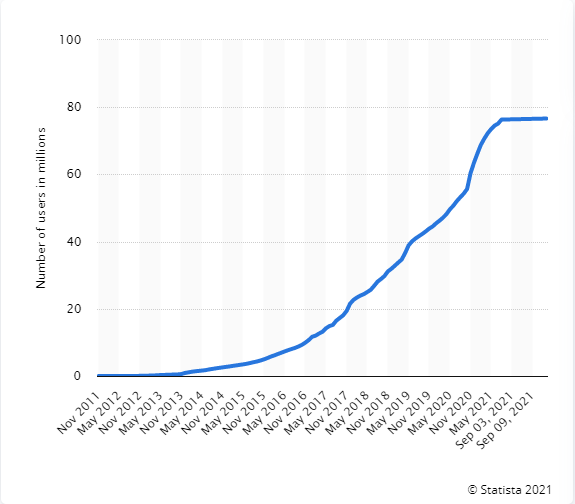
The Bad
On the flip side, however, it turns out that the crypto features that have been increasingly attracting the market towards blockchain are the same ones that are, ironically, holding it back.
You’ll notice, for instance, that while crypto users support the decentralized form of payment, governments and regulatory bodies are not particularly open to the idea. Instead, they tend to be indifferent towards blockchain and crypto mobile apps, arguing that blockchain currencies are extremely volatile because they lack proper legal backing.
As a matter of fact, recent research on the matter suggests that a whopping 80% of the world’s central banks are yet to support cryptocurrencies due to legal limitations. Their digital currency laws either prohibit them from the practice or happen to be ambiguous without explicit guidelines on the use of cryptocurrencies.
Take, for instance, the United States. While the use of blockchain and crypto apps is legal in the country, it’s yet to be sanctioned by the federal or state governments.
That means that, among other things, crypto users can’t insure their blockchain-funded accounts like regular U.S. dollar reserves. Consequently, if a third-party blockchain wallet company happens to go under your cryptocurrency account, the U.S. government won’t be obligated to intervene and help you recover the funds.
These are the legal gaps that fraudsters try to capitalize on to defraud crypto users. By now, you’ve probably heard of a couple of crypto-related Ponzi schemes that have swindled blockchain ‘investors.’
The high-profile OneCoin case is one example of a textbook pyramid scheme that disguised as a blockchain project, only to end up defrauding its victims billions of dollars in the form of cryptocurrency ‘investments.’
According to the Federal Trade Commission, the situation isn’t getting any better. Consumers are reportedly losing more money every year to the rising cases of cryptocurrency scams.
Consider, for example, the last quarter of 2020 and the first quarter of 2021. In this six-month period, Americans lost over $80 million to all sorts of crypto scams – consequently marking a sharp 1000% increase from the fall of 2019.
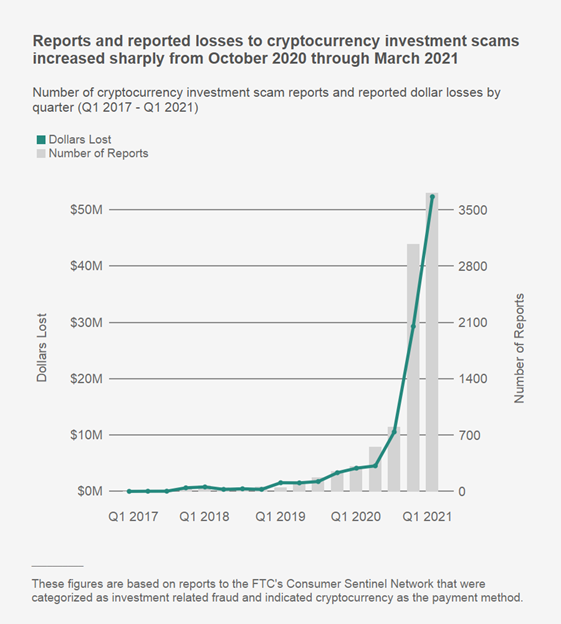
So rampant have such cases been over the years that even digital advertising platforms had to step in. You’ll notice, for instance, that the likes of Facebook, Twitter, Instagram, and Google banned cryptocurrency-related app advertisement campaigns on their platforms as early as March 2018. And although some of the sites have since loosened their restrictions, it’s not yet open sesame for crypto app marketing ads.
Combined, all these complications make it increasingly difficult for new crypto wallet apps to penetrate the market. Only the few blockchain applications that manage to be strategic about their crypto app marketing ultimately get to beat the odds.
On the Google Play Store, for instance, you’ll find outstanding performers like Crypto.com, Trust, and eToro. Each of these crypto apps has, so far, garnered over 10 million downloads.
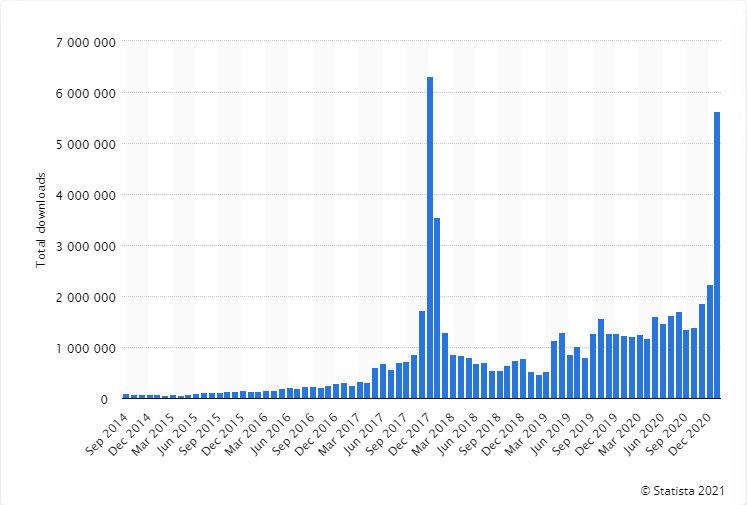
And when you throw in the numbers from the iOS App Store, it turns out that the 10 most popular cryptocurrency wallet applications are now raking in in excess of 5 million app downloads per month. That translates to over half a million crypto app downloads and installations for each app on a monthly basis.
Here are 6 solid crypto app marketing tricks that’ll potentially push you to such levels.
6 Top Crypto App Marketing Tactics That’ll Boost Your App Installs
#1. Know Your Target Audience
This is, inarguably, the first rule of digital marketing. And the same applies to blockchain app promotions – you’ve got to know who you’ll be reaching out to, so you can craft a mobile app marketing strategy and message that resonates well with them.
Now, make no mistake about it. “Target audience” doesn’t necessarily refer to just anyone interested in cryptocurrencies and crypto mobile apps. While the blockchain market is pretty wide – with hundreds of millions of cryptocurrency users and counting – not everyone is your ideal mobile app user.
You should, instead, narrow down to the groups of people who stand to benefit most from your cryptocurrency applications.
Your crypto app marketing strategy should take into account the overall value of the crypto app. In other words, what problems does it address? What solutions does it offer to cater to the needs of cryptocurrency users? What types of users do similar competitor apps attract?
These review questions will help you create a profile of your ideal crypto app user, which you could then use to establish the type of audience you’ll be targeting in your cryptocurrency app advertisement campaigns.

If you’re building a crypto exchange app, for instance, your target audience would be natural cryptocurrency buyers, blockchain traders, plus both short-term and long-term investors.
Crypto wallet apps, on the other hand, tend to resonate best with people who are looking to create cryptocurrency accounts. Most of them are seasoned blockchain users, although you could also target newbies who are just getting started with crypto storage.
As for a crypto ICO app, though, your principal focus wouldn’t exactly be cryptocurrency users. Rather, your mobile app marketing would target private investors who are seeking to hold cryptocurrencies for profit.
Don’t leave at that, though. Once you determine your focus areas, you should proceed to segment your target audiences at a much deeper level.
This is where you bring in AI-driven CRM software to provide insights into your prospects’ interests, demographics, devices, and behaviors.
#2. Get Published On Cryptocurrency Calendars
One particularly interesting thing about blockchain enthusiasts is, they closely follow what they call “cryptocurrency calendars.” These are specialized platforms and apps that publish digital timelines of upcoming crypto-related events and news.
Subscribers, for example, get to learn about blockchain developments, cryptocurrency workshops, upcoming crypto ICOs, and crypto mobile apps.
Some of the most popular cryptocurrency calendars include:
- Coindar.org
- CoinMarketCap.com
- CoinsCalendar.com
- CoinMarketCal
- CoinEvents.co
Here’s a snippet of the calendar timeline on CoinMarketCal.com to give you an idea of what to expect:
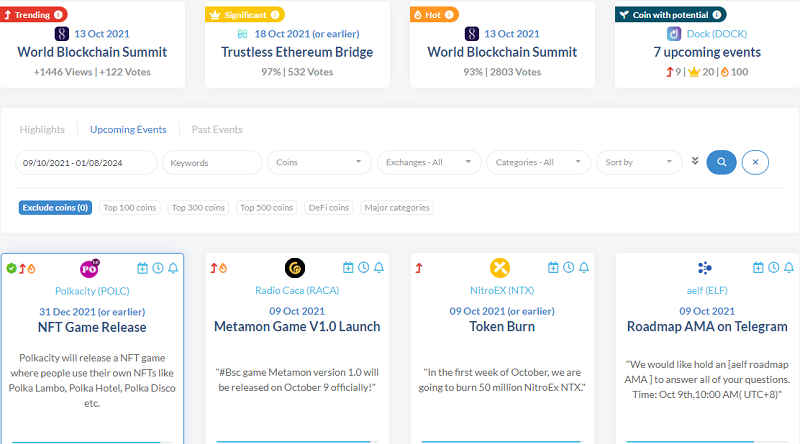
Going by the engagement driven by the major cryptocurrency calendars, you can tell that their publications get to reach millions of people every month. Members of the blockchain community across the globe happen to rely on such platforms as the primary sources of news on crypto-related events.
As such, you might want to get your crypto mobile app featured on as many calendars as possible. At least many of the sites give you a form for submitting the news, along with the accompanying media, and links.
That said, the best time to kickstart the submissions is way before you even launch the crypto app. You can go ahead and share details about the exciting features that’ll come with the app, the launch dates of the beta and main versions, plus any relevant app development news.
3. Warm Up The Market With Pre-Launch Mobile App Reviews
Although Cryptocurrency calendars are great at spreading the news, they don’t really give their readers an actual feel of the crypto app and related products. So, more often than not, you’ll find that bulk of the audience may not necessarily take special notice of your app’s features.
Now, to mitigate that, consider following up the calendar publications with a beta launch. The purpose of this early version is to give the market the chance to experience and test out the crypto app’s core features – before you ultimately drop the final version.
Various research studies on consumer behaviors have already shown that product sampling and testing eventually go a long way towards influencing buying decisions. Customers, in fact, tend to respond better to product sampling opportunities than free coupons.
What’s more, a beta release also gives users the chance to review the app, and possibly provide valuable feedback based on their experiences. You could then draw actionable insights from all their notes, and use that to develop a much superior final version.
But then again, where do you even start? What procedure should you follow to release and market the beta version of your crypto app?
Well, thankfully, there’s a wide range of distribution platforms and tools for beta app releases. If you’re a member of Apple’s Developer Program, for example, you get to use the TestFlight app to not only distribute the beta release to external users, but also facilitate testing, and collect feedback.
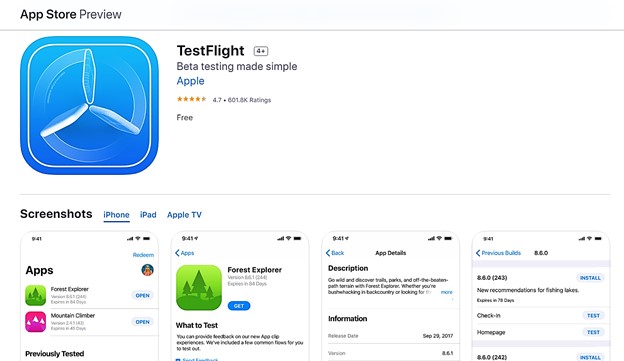
Other notable beta distribution platforms include Crashlytics, TestFairy, and DeployGate.
While you’re at it, you might also want to get the crypto app featured on popular app review platforms that support blockchain applications.
Unfortunately, however, the site options here are fairly limited and extremely competitive. That’s why, as you’ll notice, the review editors are often too busy to respond to newbies.
Fortunately, though, there’s a way around this problem. You just need to work with a well-connected crypto app marketing agency. At least they’ll get through to popular app review platforms and convince the editors to feature your app.
In the meantime, you might want to get the word out through your blog, or maybe communicate directly with cryptocurrency communities through forums, Facebook groups, LinkedIn groups, Slack, Telegram, and Reddit. The choice is all yours.
#4. Leverage The Media Through Mobile App Press Releases
After making announcements on crypto calendar sites and blockchain forums, plus distributing a beta release and getting featured on popular mobile app review sites, it’s time you took it all up a notch. This is where you leverage the power of the mainstream media in your crypto app marketing.

As it turns out, blockchain and cryptocurrency are hot topics across both online and offline media channels. Journalists are so excited about the buzz that they now have news features, newspaper columns, blog sections, and magazines that are entirely dedicated to cryptocurrencies and blockchain.
Even the largest global media outlets are in on it – including the likes of CNN, Reuters, BBC, EuroNews, Time, and ABC News. If your story gets published on such news platforms, your audience reach could build up quite dramatically over a short period of time.
Now, this whole journey starts with the crypto app press release – which is a brief write-up that follows a specific format to get the message across to journalists. You can, for instance, use it as part of your prelaunch crypto app marketing campaign to officially announce your upcoming app.
But, don’t make it all about the app’s launch. Instead, such an app press release should additionally outline even basic details about the app’s features, the company, your achievements, plus your app development goals.
Once it’s done, you can go ahead and publish the crypto app press release on your blog, as well as distribute it via email to media houses and crypto magazines. Journalists are subsequently expected to review the information, and then draft their own stories to run on the news publications.
But then here’s the kicker. Journalists, particularly on large media platforms, are not that receptive. Chances are, they won’t even notice your email – leave alone opening it.
You see, reporters in the two verticals that are closest to crypto apps happen to receive about 20 pitches a day. Personal finance desks get an average of 18.21 per day, while science and technology clocks in an average of 23.86.
And in terms of online popularity, journalists that work for media platforms with a domain authority of 90 and above tend to receive, on average, 32 pitches per day.
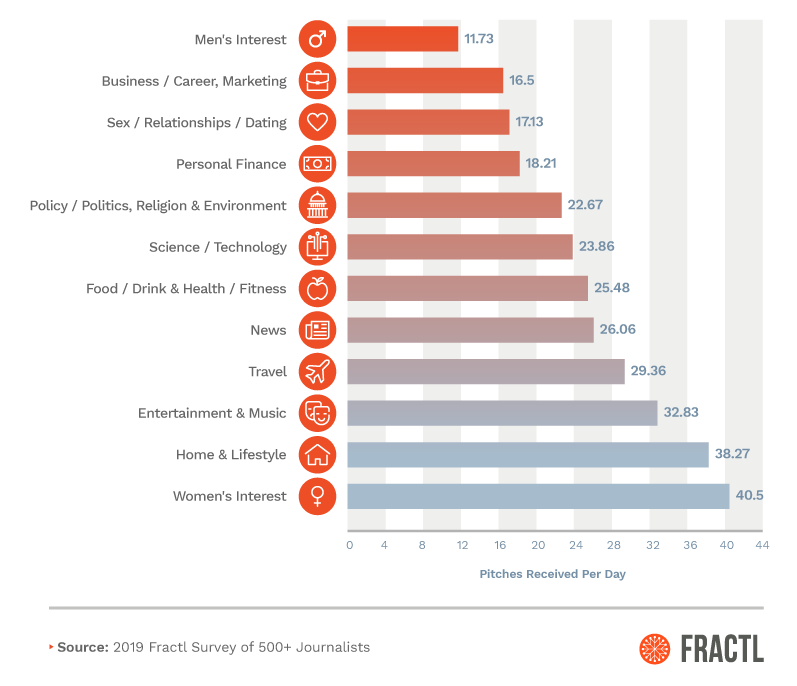
At that rate, it’s understandable that only a few emails with intriguing pitch titles are ultimately opened. And even then, the journalists only run the stories that their audiences would be most interested in.
So, you might want to wear all your creative hats as you draft the crypto app press release. Use short but playful titles on your pitch emails, and then remember to prioritize journalists who frequently feature crypto apps in their publications.
#5. Build Trust With Website Content
With the rising cases of cryptocurrency scams stirring up increased apprehension among consumers, it has become extremely critical for new crypto apps to prioritize winning market trust.
Besides, trust happens to substantially influence human emotions, which – through neuroimaging research – have proven to overpower rational thinking when it comes to brand evaluation. Put simply, purchase decisions made by consumers are based more on what they ‘feel’ about your brand than the facts they know about your products.
Fair enough. But then again, how exactly do even build high levels of trust with your crypto mobile app marketing campaigns?
Well, the truth is, there are many approaches you could take to assure prospective users of your app’s authenticity. However, not many can match up to the effectiveness of content marketing.
Website content has the potential to not only improve your SEO but also gradually influence perceptions and opinions towards your business. As people continue to connect with your brand through content posts, the less they’ll grow suspicious, and the more they’ll learn to trust your crypto app.

Ok, and what types of content are we talking about here?
Well, in the context of crypto app marketing, product confidence is earned through multiple types of content pieces. You could, for instance, start by publishing the following:
- Company information – including the team members, their bios, social media links, and high-quality photos.
- The entire roadmap of your crypto app project – including a timeline of the milestones, your achievements, upcoming releases, product updates, etc.
- Crypto app description – where you should provide all the finer details about your cryptocurrency app’s features.
- Press coverage records – which should basically showcase all the mentions by major publications across the cryptocurrency community, links to feature articles, as well as quotes from prominent industry leaders.
- Social proof – in the form of verifiable testimonials and recommendations from satisfied users. While 92% of consumers trust recommendations from family and friends, it turns out that 79% trust online reviews as much as personal recommendations from friends and family.
- The company’s contact information across all the available channels for optimal crypto app marketing.
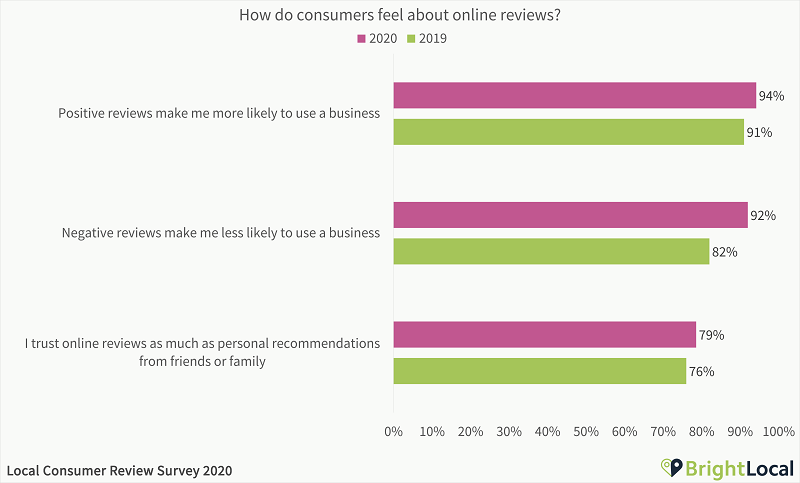
#6. Dominate Organic Rankings With App Store Optimization
As you proceed to launch the crypto app on the iOS App Store or Google Play Store, you ought to supplement your out-of-store marketing efforts with in-store crypto app marketing. And to be specific, nothing is as effective here as App Store Optimization.
ASO, as it’s popularly known, is more or less the SEO version of the App Store. It entails tweaking your App Store page features to improve the crypto app’s ranking on specific keyword searches.
And by so doing, you get to dominate your competitors in the search results charts. This drives increased discoverability within the App Store, which should lead to an upsurge in the app views as well as crypto app downloads and installs.
Some of the App Store Optimization tweaks that you should apply to include:
- Placing relevant keywords on the crypto app description, app title, and keyword fields.
- Uploading high-quality app screenshots to your App Store page.
- Adding descriptive app preview videos related to the crypto app.
- Designing an attractive app icon.
- Picking the appropriate app category.
It’s worth noting, though, that while their core principles might be similar, ASO on Google Play Store cannot be directly replicated on the iOS App Store. The tweaks follow different guidelines across the two app stores.
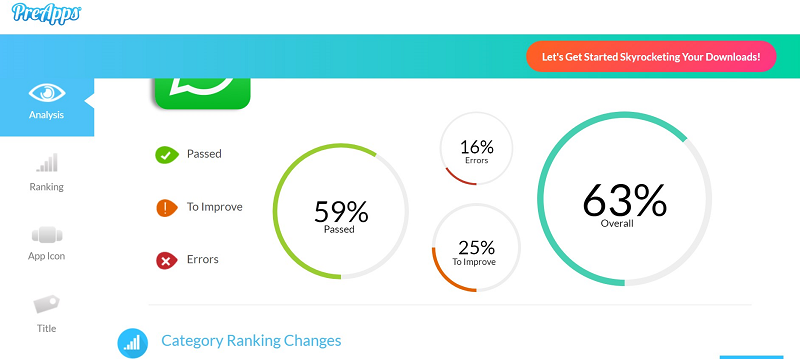
That notwithstanding, it just so happens that you can manage both sets of ASO using the same software. PreApps App Report is the name of the App Store Optimization tool, and it’s built to provide in-depth insights into your app’s in-store tweaks across both the Google Play Store and Apple App Store.
Running a quick search on your crypto app will reveal not only the ASO parameters that you’ve adequately fulfilled but also the aspects that you need to improve, as well as all the errors that you should work on.
What’s more, it doesn’t leave you to figure it all out by yourself. PreApps App Report accompanies the analytics with clear recommendations on how you could resolve the ASO issues to improve your App Store search rankings.
And the best thing is? It’s completely free of charge.
Key Takeaways
To summarize everything we’ve discussed so far, here is a breakdown of the most notable points:
- A cryptocurrency is a decentralized form of digital money, which runs on blockchain technology. The transactions are entirely peer-to-peer, with binary data being exchanged from one party to another.
- There were 66 cryptocurrencies by 2013, 506 in 2014, and then 644 by 2016 – after which the blockchain concept proceeded to spread exponentially, to the point of hitting 6,000 plus cryptocurrencies by 2021.
- Popular app subcategories here include Crypto mining apps; Crypto trading apps; Crypto exchange apps; Crypto wallet apps; Crypto investing apps; Crypto tracking apps.
- Estimates published by Crypto.com suggest that there are now more than 220 million crypto users across the globe – up from 106 million in 2019.
- Crypto wallet apps and platforms, for instance, now boast a user base of close to 80 million and still climbing – courtesy of the blockchain gold rush.
- The crypto features that have been increasingly attracting the market towards blockchain are the same ones that are, ironically, holding it back.
- A whopping 80% of the world’s central banks are yet to support cryptocurrencies due to legal limitations. Their digital currency laws either prohibit them from the practice or happen to be ambiguous without explicit guidelines on the use of cryptocurrencies.
- In the last quarter of 2020 and the first quarter of 2021, Americans lost over $80 million to all sorts of crypto scams – consequently marking a sharp 1000% increase from the fall of 2019.
- The likes of Facebook, Twitter, Instagram, and Google banned cryptocurrency-related ads on their platforms as early as March 2018. And although some of the sites have since loosened their restrictions, it’s not yet open sesame for crypto app marketing ads.
- The 10 most popular cryptocurrency wallet applications are now raking in in excess of 5 million app downloads per month. That translates to over half a million app installations for each app on a monthly basis.
- You’ve got to know who you’ll be reaching out to, so you can craft a marketing strategy and message that resonates well with them.
- Create a profile of your ideal crypto app user, and then use it to establish the type of audience you’ll be targeting in your crypto app marketing campaigns.
- Going by the engagement driven by the major cryptocurrency calendars, you can tell that their publications get to reach millions of people every month. As such, you might want to get your crypto mobile app featured on as many calendars as possible.
- The best time to kickstart crypto calendar submissions is way before you even launch the crypto app.
- The purpose of a beta release early is to give the market the chance to experience and test out the app’s core features – before you ultimately drop the final version.
- A beta release also gives users the chance to review the crypto app, and possibly provide valuable feedback based on their experiences.
- A crypto app press release is a brief write-up that follows a specific format to get the message across to journalists.
- Reporters in the two verticals that are closest to crypto apps happen to receive about 20 pitches a day. Personal finance desks get an average of 18.21 per day, while science and technology clocks in an average of 23.86.
- In terms of online popularity, journalists that work for media platforms with a domain authority of 90 and above tend to receive, on average, 32 pitches per day.
- Trust happens to substantially influence human emotions, which – through neuroimaging research – have proven to overpower rational thinking when it comes to brand evaluation.
- Purchase decisions made by consumers are based more on what they ‘feel’ about your brand than the facts they know about your products.
- Website content has the potential to not only improve your SEO but also gradually influence perceptions and opinions towards your business.
- While 92% of consumers trust recommendations from family and friends, it turns out that 79% trust online reviews as much as personal recommendations from friends and family.
- App Store Optimization is more or less the SEO version of the App Store. It entails tweaking your App Store page features to improve the crypto app’s ranking on specific keyword searches.
- While their core principles might be similar, ASO on Google Play Store cannot be directly replicated on the iOS App Store. The tweaks follow different guidelines across the two app stores.
- Running a quick search on your app with PreApps App Report will reveal not only the ASO parameters that you’ve adequately fulfilled but also the aspects that you need to improve, as well as all the errors that you should work on.
Over To You
As your blockchain application continues to grow, other strategies that you might want to incorporate into your crypto app marketing plan include; influencer marketing, paid ads, and possibly viral video marketing.
In the meantime, keep in mind that regardless of the execution sequence you choose to follow in your cryptocurrency mobile app marketing plan, all the channels and strategies ought to be aligned with each other. This streamlined approach will help you track all your promotion efforts, target audiences at the ideal time and with the right messages, plus systematically coordinate engagements across all the stages of the conversion funnel.
I’ve done it all quite successfully with tens of crypto apps, and I can promise you even better results on your blockchain app. Just let us know the crypto app growth plans you have in mind, and we’ll come up with a marketing plan that guarantees astronomical improvement on the app download numbers.
Newsletter
Don’t miss a thing! Sign up to receive daily news
Subscribe Newsletter







